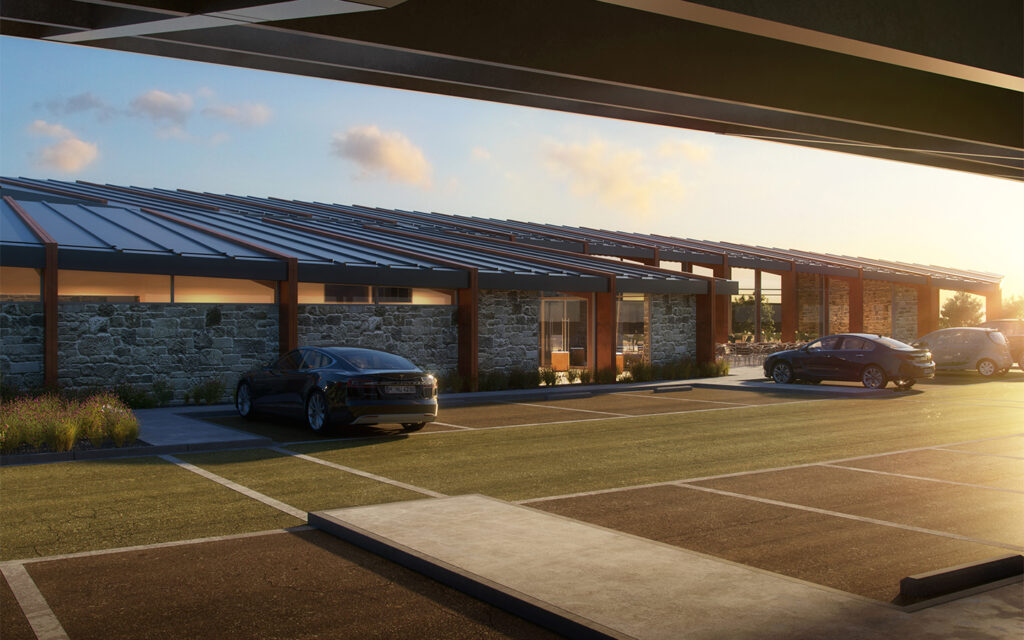Kimmeridge Bay
When an Estate’s land includes such a stand-out public attraction as Kimmeridge Bay, it is essential to build a team who can exploit that opportunity. It was the matchmaking and development of a business partnership by Fowler Fortescue that underpins this particular success story.

Background
Kimmeridge Bay is an outstanding location on the Jurassic Coast. The land belongs to the Smedmore Estate who had long wanted to utilise the opportunity that it presented as a tourism hotspot. Of course, such an asset of this nature in this location brings with it a multitude of restrictions by way of SSSIs, an AONB that includes a Scheduled Ancient Monument and bordering a marine Special Area of Conservation. Any attempt to develop a business opportunity would require expert and careful navigation, and that’s exactly how Owen Davies managed to achieve success for the Estate.
Fulfilling a need
As of 2019, Kimmeridge Bay had no catering facilities for the thousands of people who visit each year. Meeting that need would be the obvious opportunity to exploit but getting such an idea through the planning system, the local council groups and the statutory restrictions related to the site, would need a large degree of lateral thinking and people management.
An initial attempt to convert the only existing structures, the boathouses, and using one of them to serve from, was dismissed quickly by Planning at a pre-application consultation.
Solutions at the other end of the catering facility scale would be to bring food and beverage vehicles onto the site. This business model is extremely limited and throughput has a low ceiling. Revenues for the Estate would be small and there would be no sense that this solution ‘maximises’ the outstanding potential of the site.
Best of both worlds
From these two extremes, temporary units delivering fast food and permanent buildings delivering high margin restaurant quality food, a solution emerged that retained the best of both these worlds.
A proposal was conceived whereby a restaurant could be introduced to the site in ‘pop-up’ form. This would allow restaurant scale and quality food delivery, imposing a temporary footprint that will only operate during peak months and leave no trace through the low season. Throughput would be greater with this model and of course the food quality could be much higher value and margin.
Finding the perfect partner
The business model that promised the greatest opportunity was a formal business partnership – the Estate providing the land, the stability and the project management skills through Fowler Fortescue, and the Partner providing the catering and business skills to deliver a high quality, high margin product viably and consistently.
In 2019 Owen Davies opened a conversation with Emma Vearncombe, the proprietor of the well-known and respected Clavells Restaurant, which is local to the Bay and long established. It soon became apparent that working with the Estate was a partnership with great and unique potential.
The catering and business skills that Emma brings aren’t just the only factor. She and her family have been hugely invested in the area across the generations and she is passionate about the potential for the use of local produce and labour. Central to this was a proposal to use seafood caught in the bay itself by resident fisherman, Nick Ford, who works 300 pots in the bay and would deliver the freshest crab and lobster for guests to enjoy.
The plan was now a complete virtuous circle with local communities benefiting from increased employment, more opportunities for local produce to be sourced, genuinely worthwhile high margin food offerings to maximise the business opportunity, locally respected participants and a low impact restaurant ‘build’ that can be removed with no trace throughout the winter months.
Test to Invest
The plan was to run a test event using a marquee-based restaurant within the less sensitive car park area across the Bank Holiday weekend in August 2021.
Given the high one-off costs, the few trading days available and hampered by COVID, the results of the event were modest, but they still showed unequivocally that the premise was right and, given a longer run, the business could be a great success.
Increasing operational days
With the knowledge gained in 2020, the Partnership had sufficient confidence to operate throughout August 2022 using the 28 day rule. Further investment was made in the mobile infrastructure, and the subsequent levels of business fully justified that outlay.
The last step in ramping up the operation was to apply for Planning Permission to run the restaurant from 2023 throughout the 5 month high season, from May to September. Temporary Consent was granted in September 2022, to operate for the 2023 and 2024 seasons to ensure there is no ‘wider impact’.
The success of the project is now in the hands of the operators who can get on and deliver a great product in a great location, monitoring and responding to any wider impacts should they arise.









